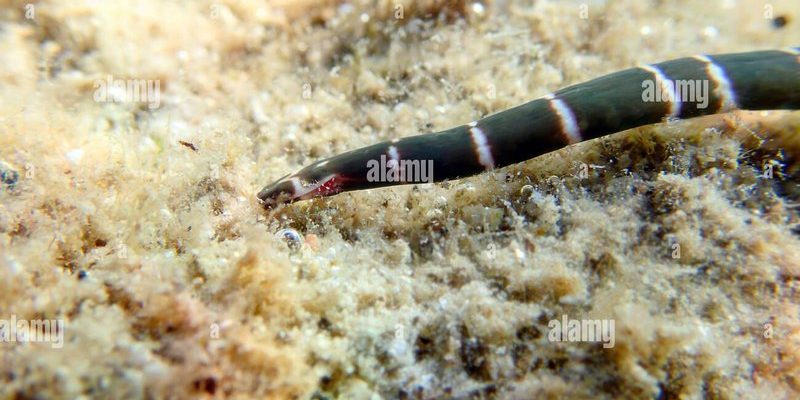
Think of bootlace worms as the long, elusive spaghetti of the sea. They might not be the most glamorous creatures, but their presence is crucial for the health of their underwater communities. Their predators come in various shapes and sizes, each contributing in their own way to the ocean’s rich tapestry of life. From small fish to larger marine mammals, let’s uncover the various hunters of these mysterious worms.
The Bootlace Worm’s Characteristics
Before we dive into the predators, it’s important to understand what makes bootlace worms unique. These worms belong to the group called *Lineus*, known for their remarkable lengths, sometimes reaching up to 180 feet! Their bodies are long and segmented, making them flexible and adaptable to their surroundings.
Bootlace worms can be found in various ocean habitats, from sandy bottoms to rocky crevices. They play a role in the nutrient cycling of marine ecosystems, breaking down organic materials. Additionally, they possess a special defense mechanism: some emit toxic proteins when threatened, which can deter potential predators. It’s almost like they have a built-in security system!
You might think, “If they’re so fascinating, who would want to eat them?” Well, nature has a way of balancing things out, and that’s where their natural predators come into play.
Top Predators of Bootlace Worms
When it comes to the ocean, there’s a long list of creatures that see bootlace worms as a tasty treat. Here are some of the primary predators that hunt these fascinating worms:
- Fish: Various species of fish, particularly flatfish and wrasses, have developed a taste for bootlace worms. Their agile bodies allow them to navigate through rocky terrains to find these delicious snacks.
- Sea Birds: Birds like gulls and shorebirds often forage for marine life on the beach, and bootlace worms can sometimes be included in their diet. These birds use their keen eyesight to spot worms peeking out from the sand.
- Crustaceans: Creatures like crabs and lobsters are opportunistic feeders. If they come across a bootlace worm, they won’t think twice about making a meal out of it.
- Squid and Octopus: These intelligent mollusks are known to prey on various marine animals, and bootlace worms are no exception. Their dexterous arms help them capture worms that are hiding in crevices.
- Marine Mammals: Some larger marine mammals, like seals, might also munch on these worms if they’re easy to catch, adding another layer to the food chain.
Each of these predators plays a significant role in controlling bootlace worm populations, ensuring that the marine ecosystem maintains a healthy balance.
How Do Predators Find Bootlace Worms?
You might wonder how these predators manage to locate bootlace worms in the vastness of the ocean. It’s all about adaptation and instinct. Here are a few ways they do it:
1. Keen Senses
Many marine animals possess highly developed senses that help them locate prey. For instance, some fish have an acute sense of smell that allows them to detect the presence of bootlace worms even from a distance. Others, like octopuses, have excellent vision and can spot a worm hiding among rocks.
2. Hunting Techniques
Predators have unique hunting styles tailored to their environments. For example, flatfish lie in wait on the ocean floor, camouflaged and ready to pounce on unsuspecting bootlace worms. In contrast, birds may use aerial views to spot movements in the sand.
3. Competition and Adaptation
Predators often compete for their meals, leading to adaptations over time. For example, a certain species of crab may develop stronger claws to dig out bootlace worms from their sandy homes if they become a significant food source.
Understanding how these predators find bootlace worms enhances our appreciation of marine life. It’s a beautiful web of survival that shows just how interconnected oceanic ecosystems are.
The Role of Natural Predators in the Ecosystem
Natural predators serve a vital role in maintaining the health of marine ecosystems. Here’s why their presence is so important:
1. Population Control
Predators regulate the populations of bootlace worms. Without these natural hunters, the worm populations could explode, leading to overconsumption of organic materials in the ocean. This imbalance would affect other species that rely on these resources.
2. Biodiversity Promotion
A diverse range of predators contributes to a more varied ecosystem. High biodiversity allows for more resilient ecosystems, better equipped to handle environmental changes and stresses.
3. Nutrient Cycling
As predators consume bootlace worms, their waste and decomposition contribute nutrients back into the ocean. This process promotes the growth of plants and phytoplankton, foundational components for all marine life.
The interconnectedness of marine life is awe-inspiring. Each species, from the smallest bootlace worm to the largest whale, plays a part in this delicate balance.
So, there you have it! Bootlace worms may seem like simple creatures, but their existence and the natural predators that hunt them create a complex web of life beneath the sea. The balance between these worms and their predators is essential for a healthy ocean ecosystem. It’s a reminder of how every creature, no matter how small, plays a significant role in nature.
In the grand scheme of things, the hunting habits and adaptations of these predators ensure that marine life continues to thrive. It’s fascinating to think about how interconnected all life is, even in the vast, deep blue ocean. As we explore and learn about these creatures, we gain insight into the wonders of our planet and the importance of preserving these ecosystems for future generations.

